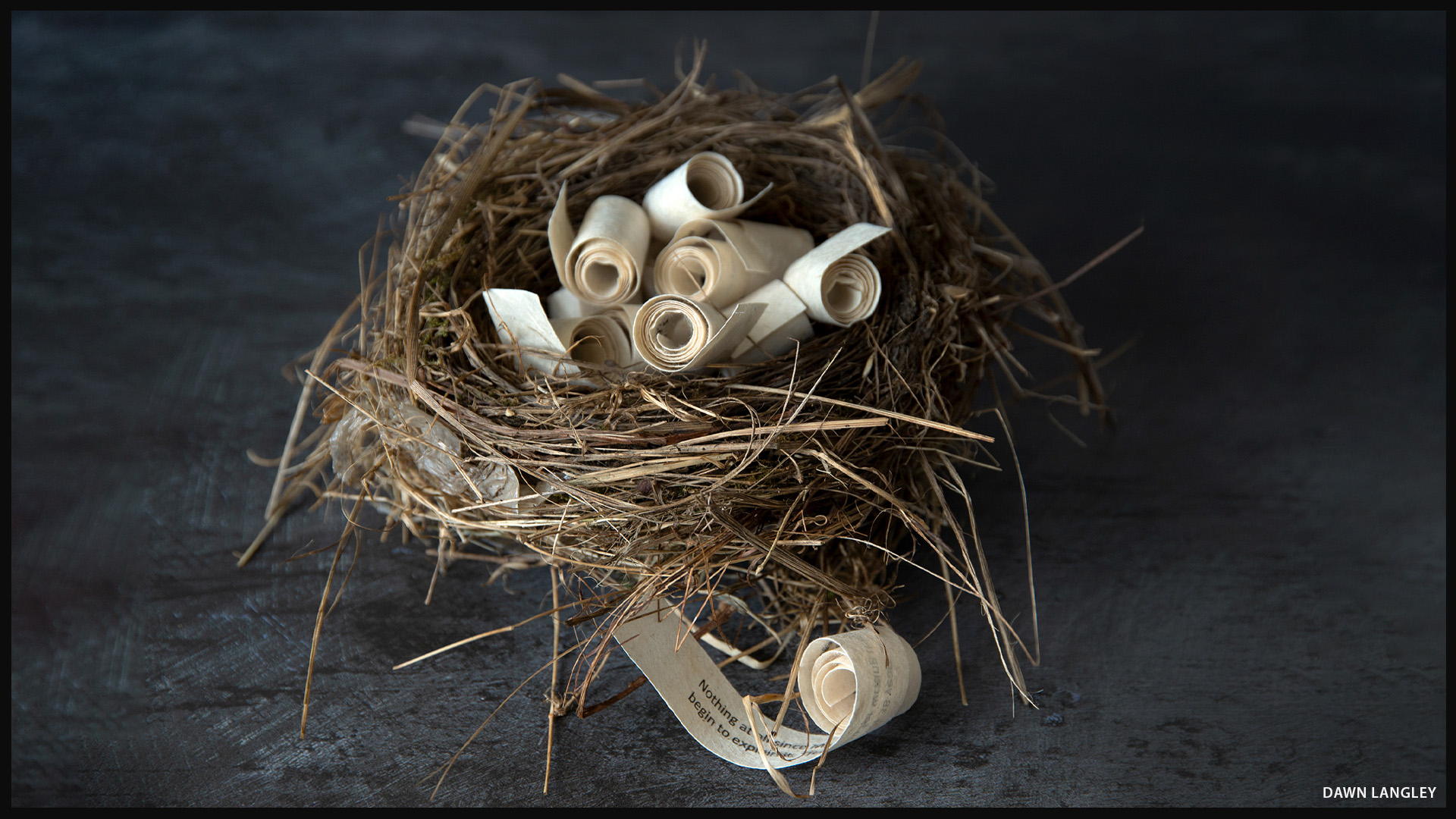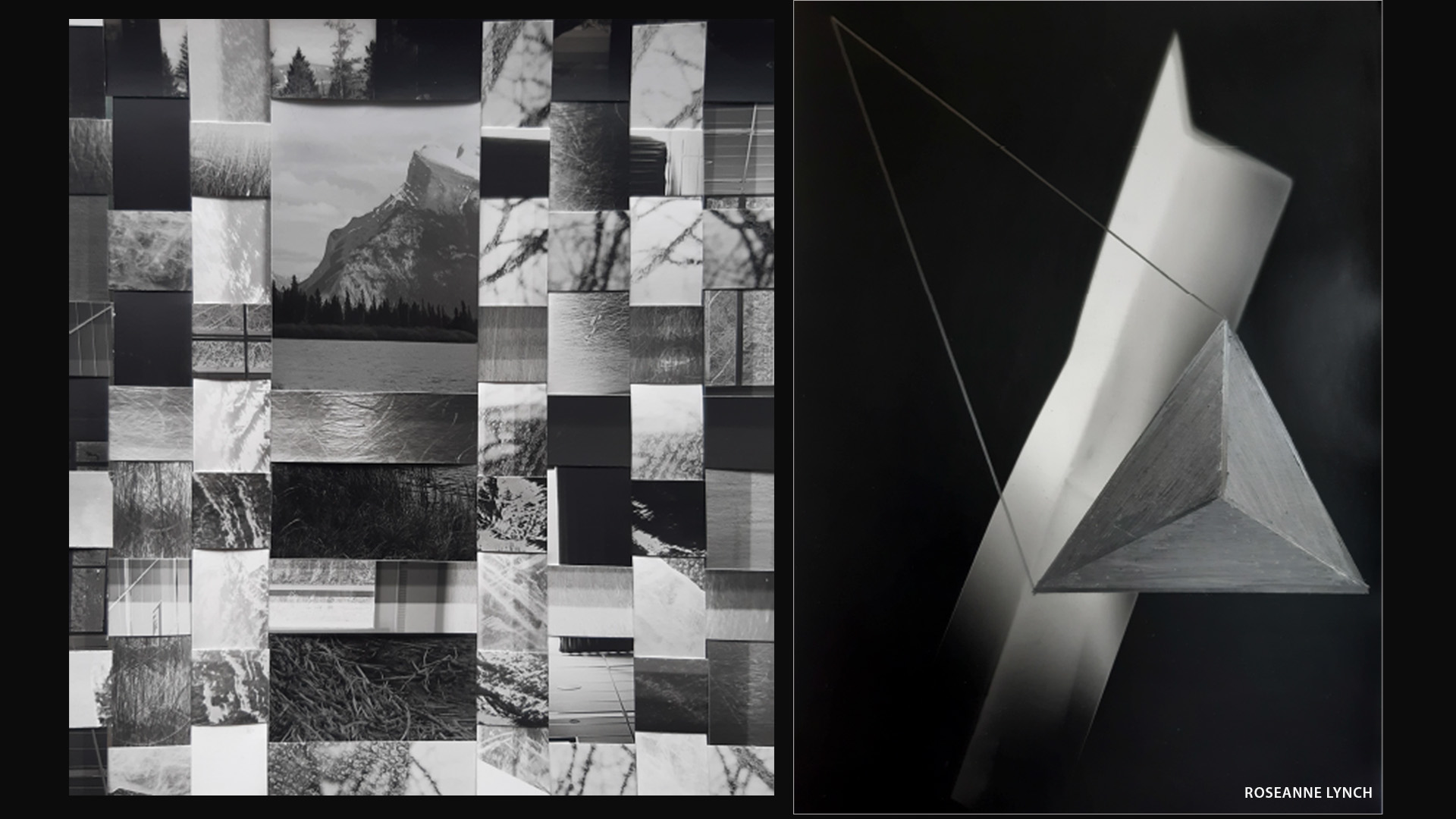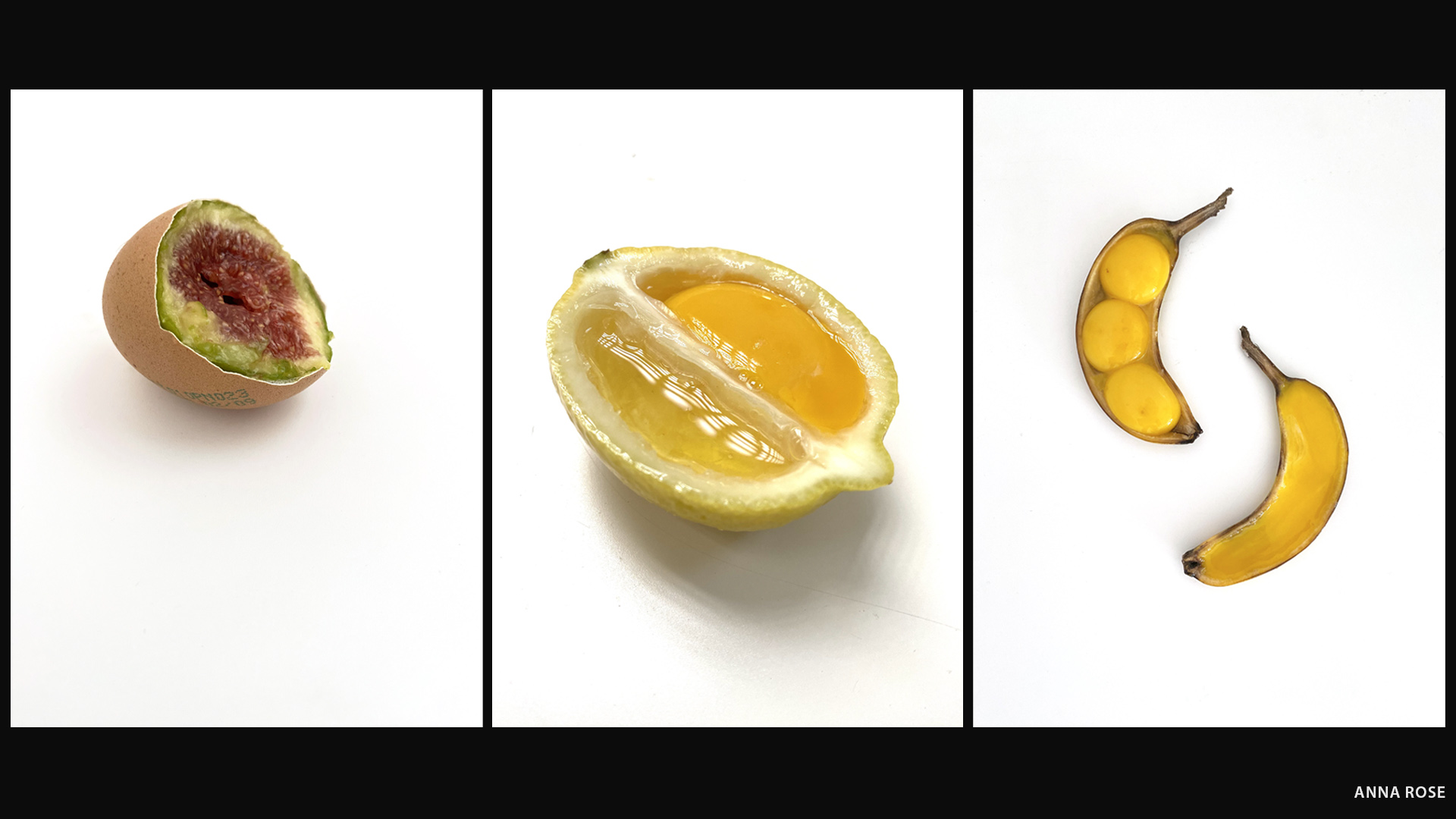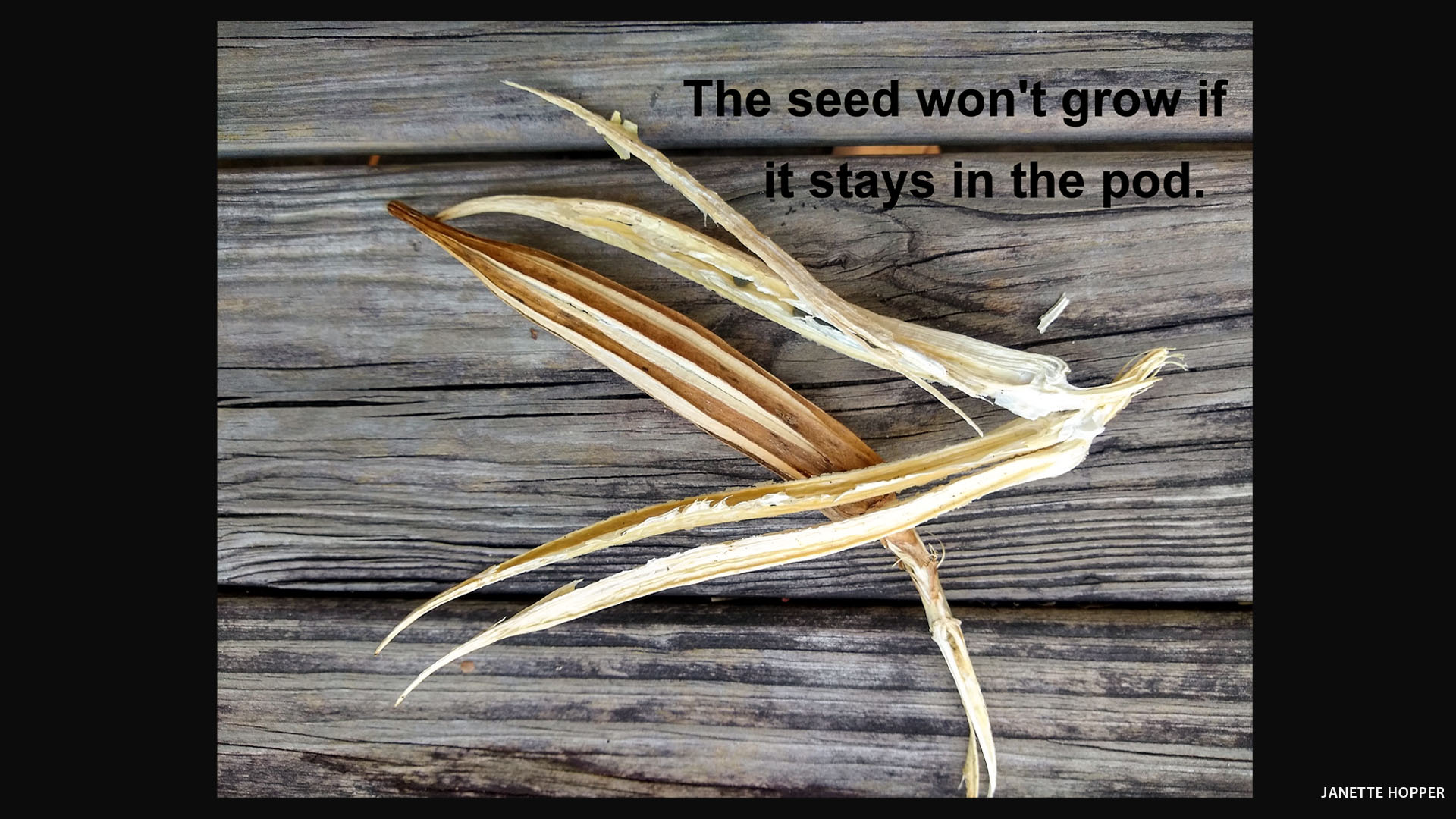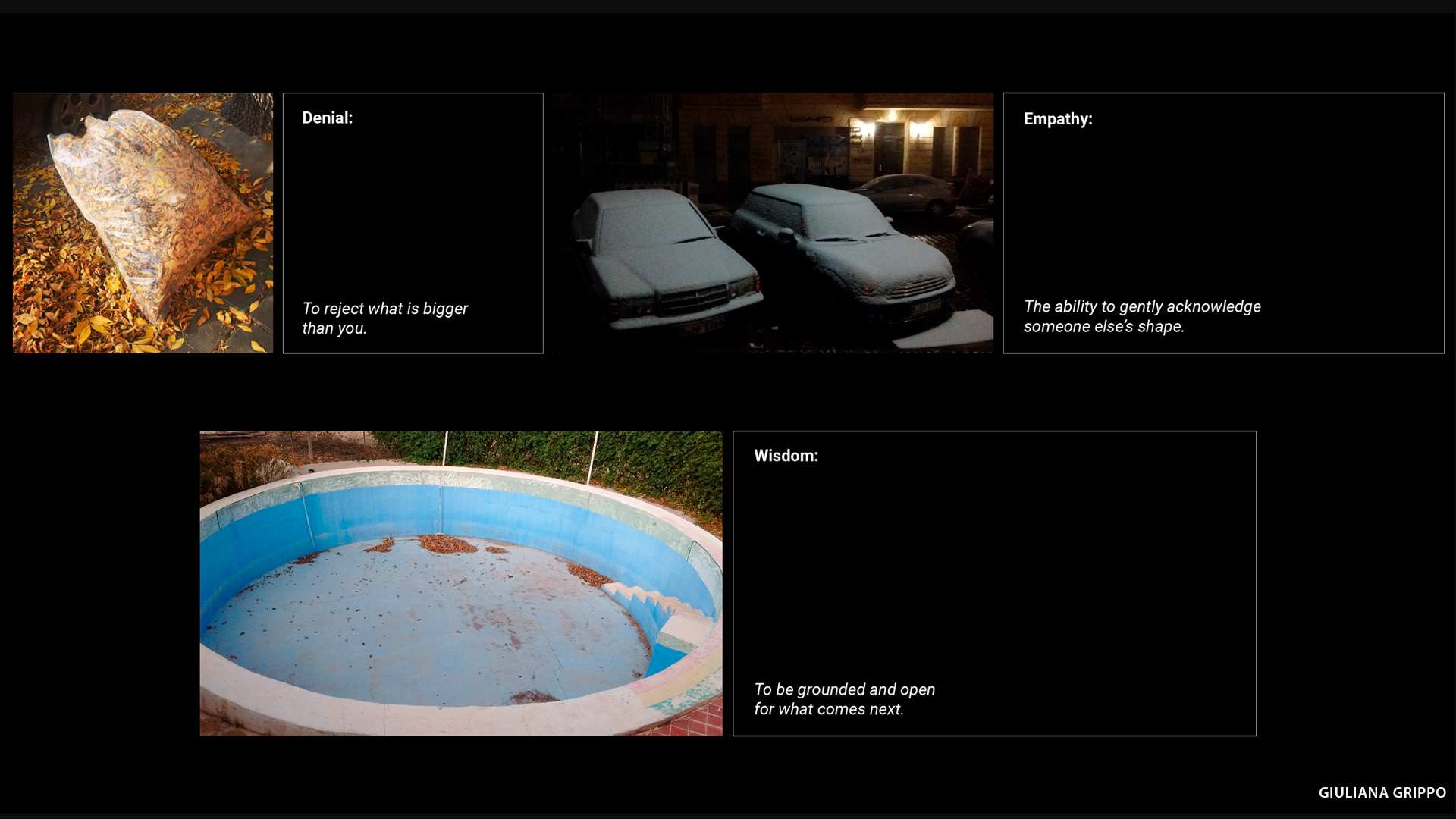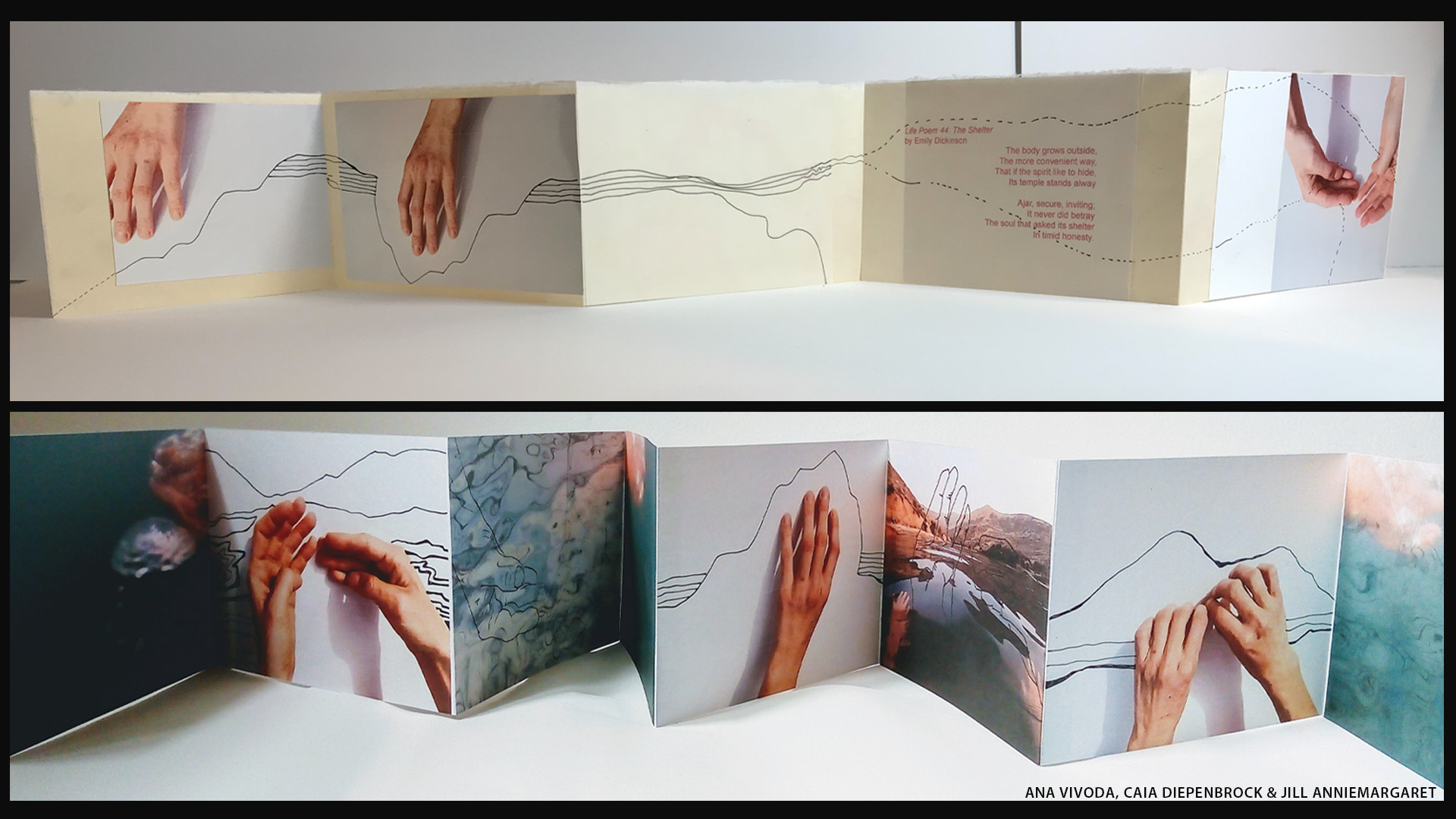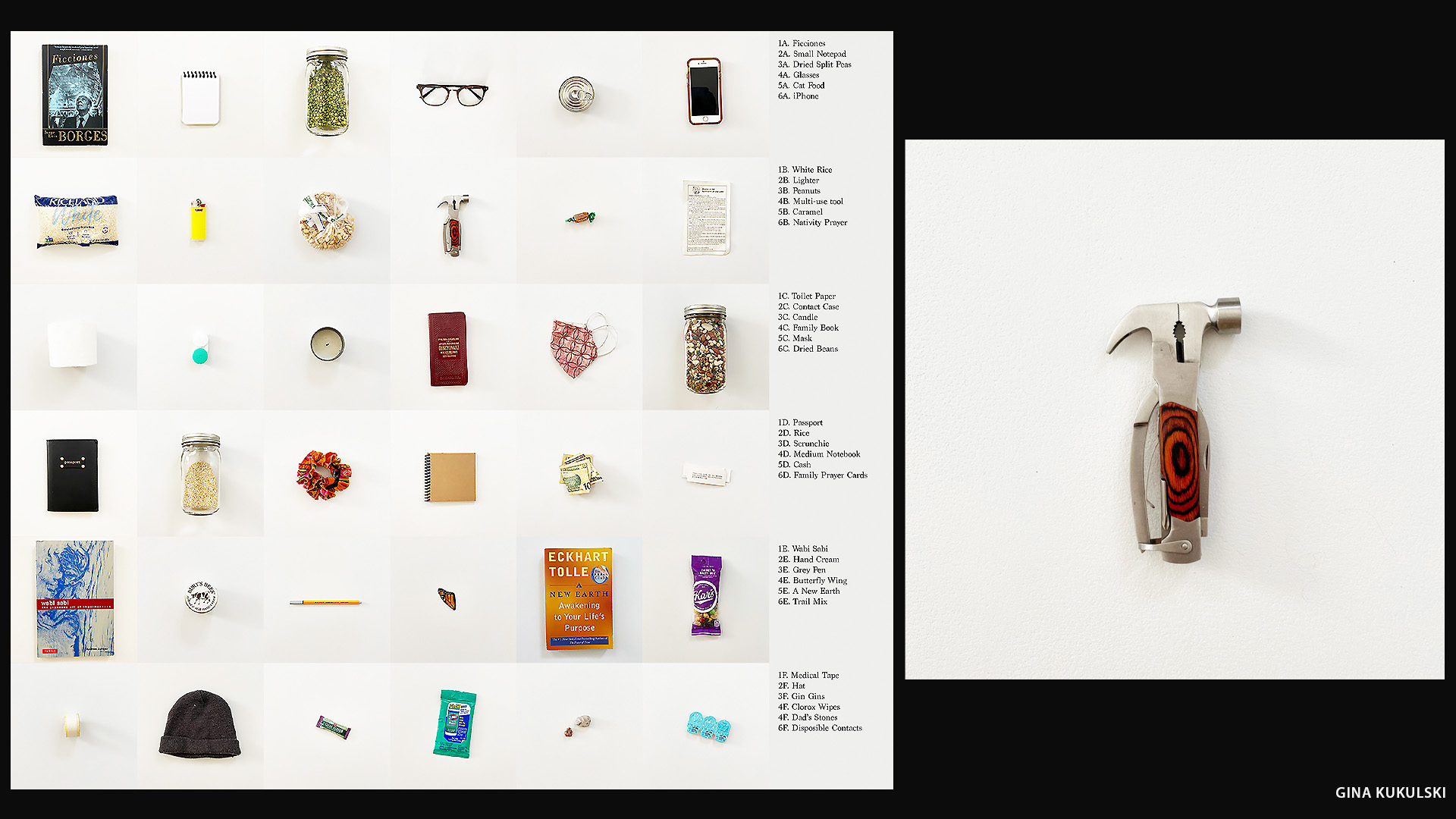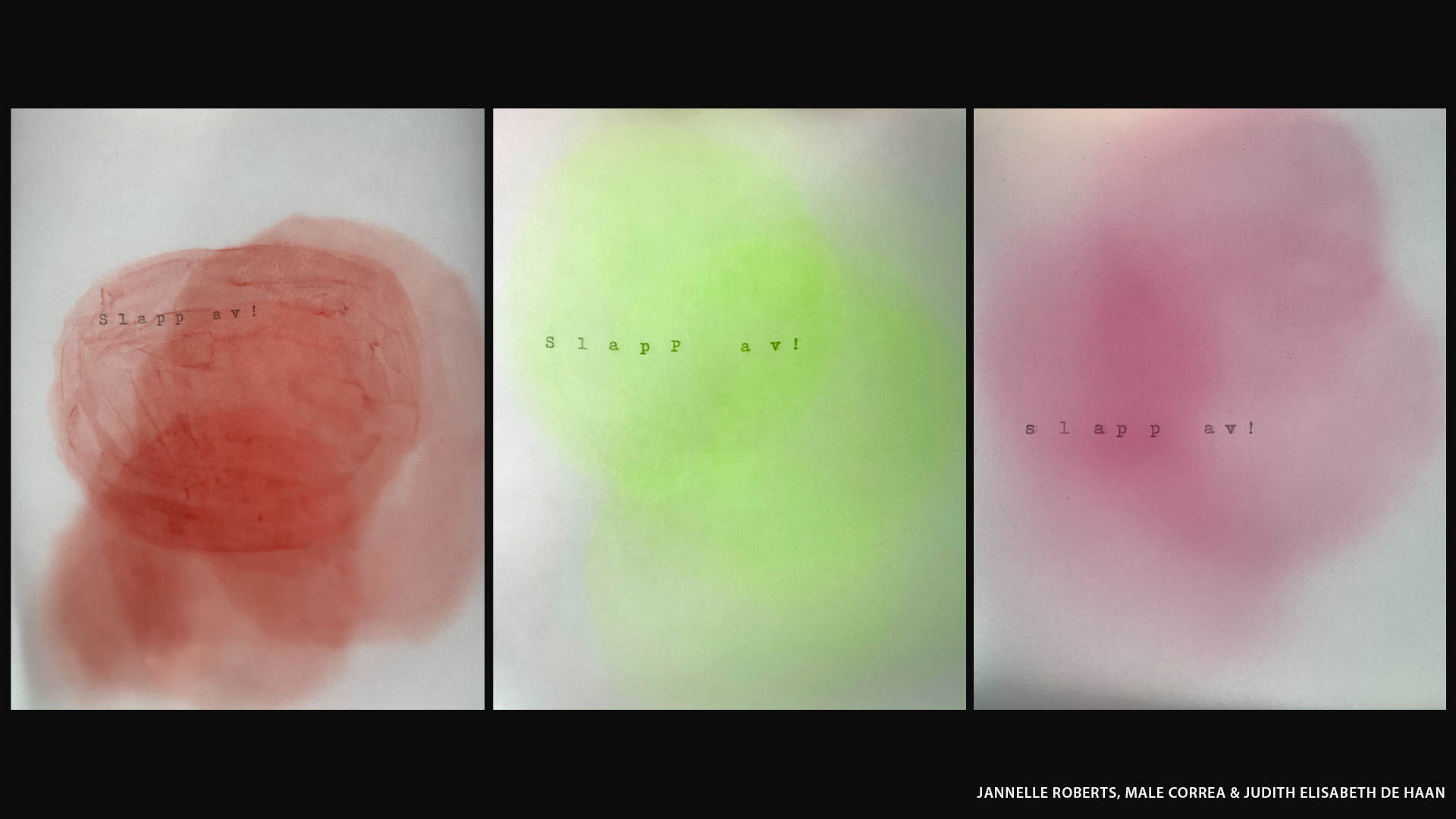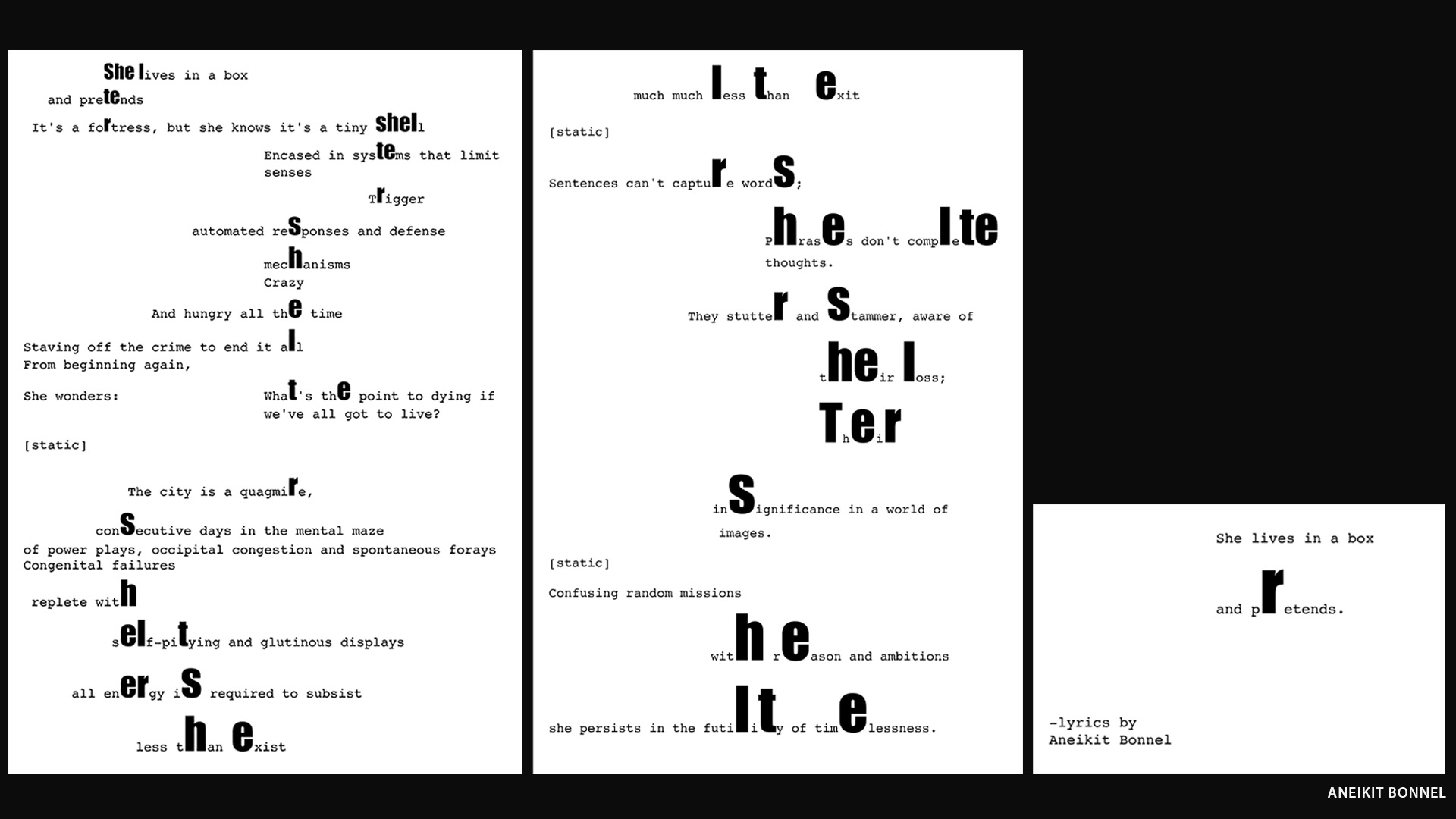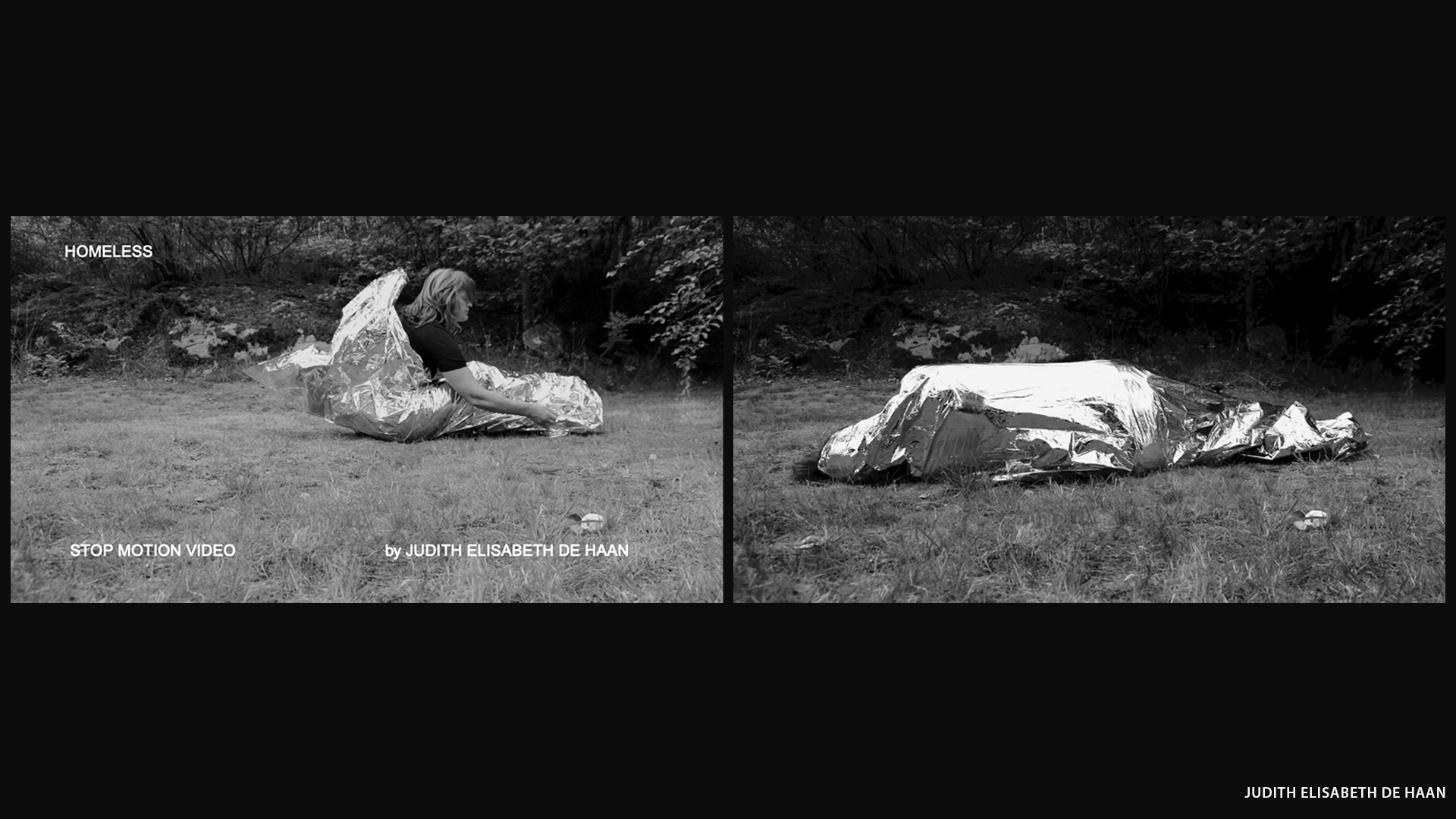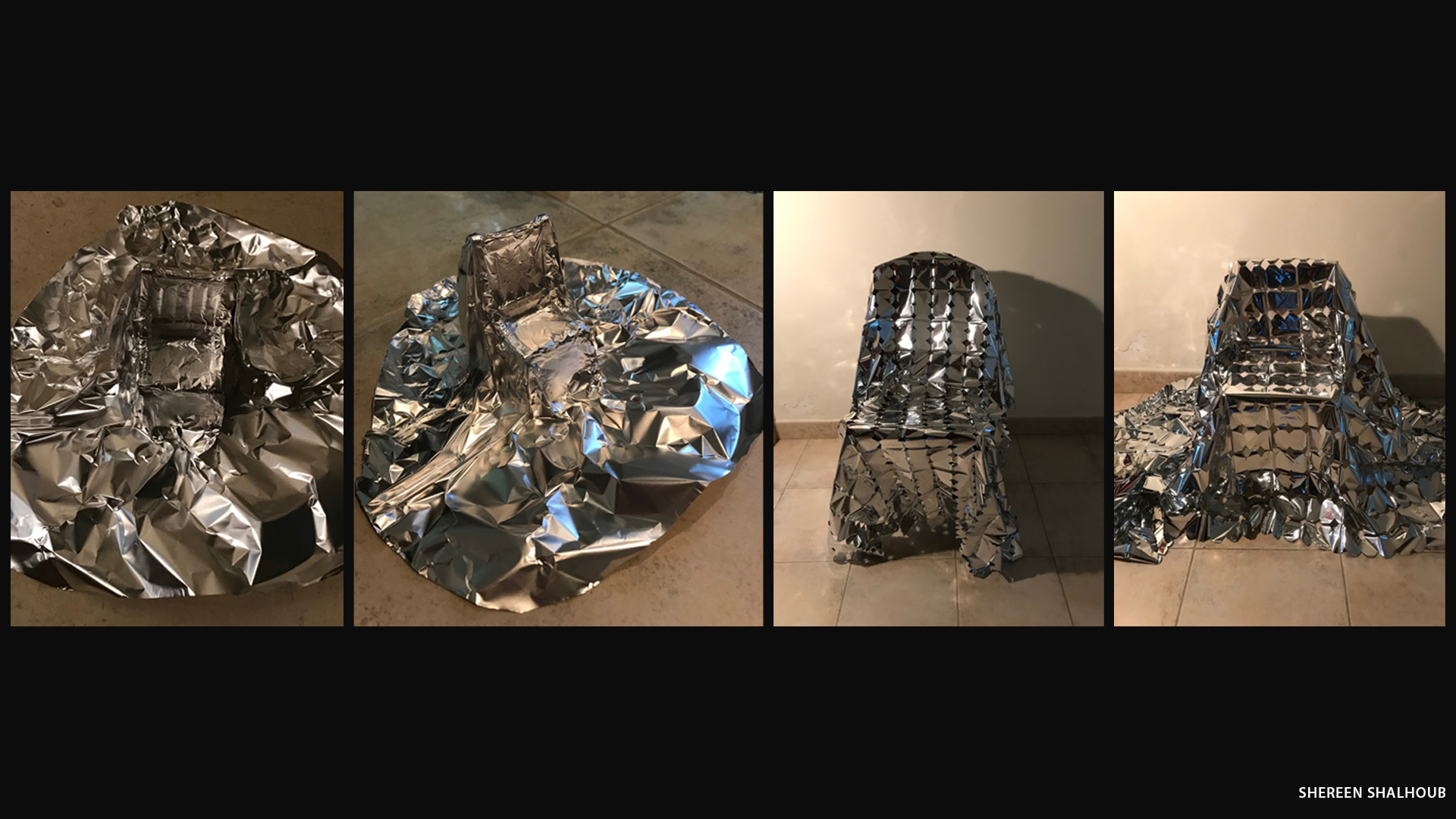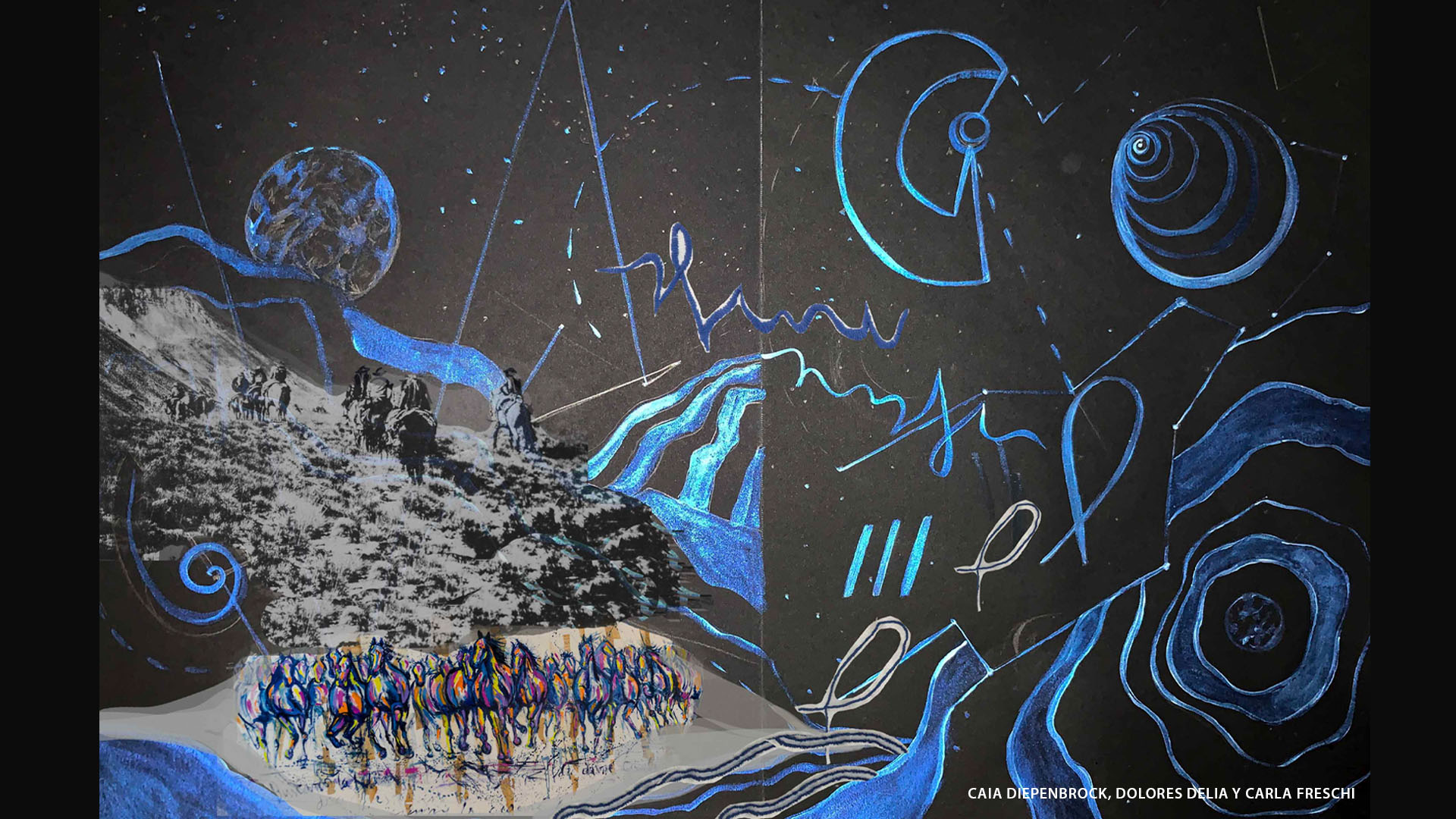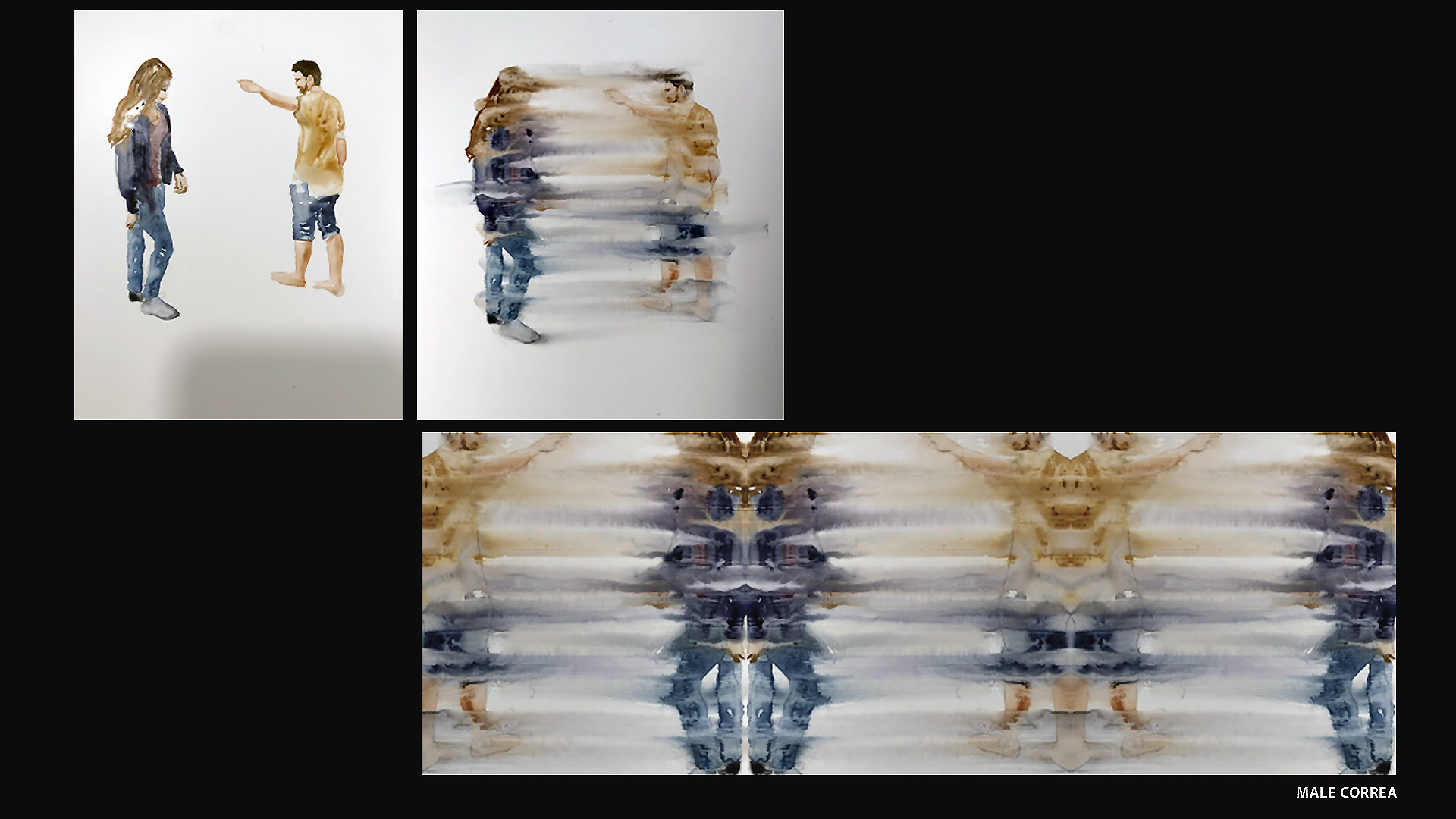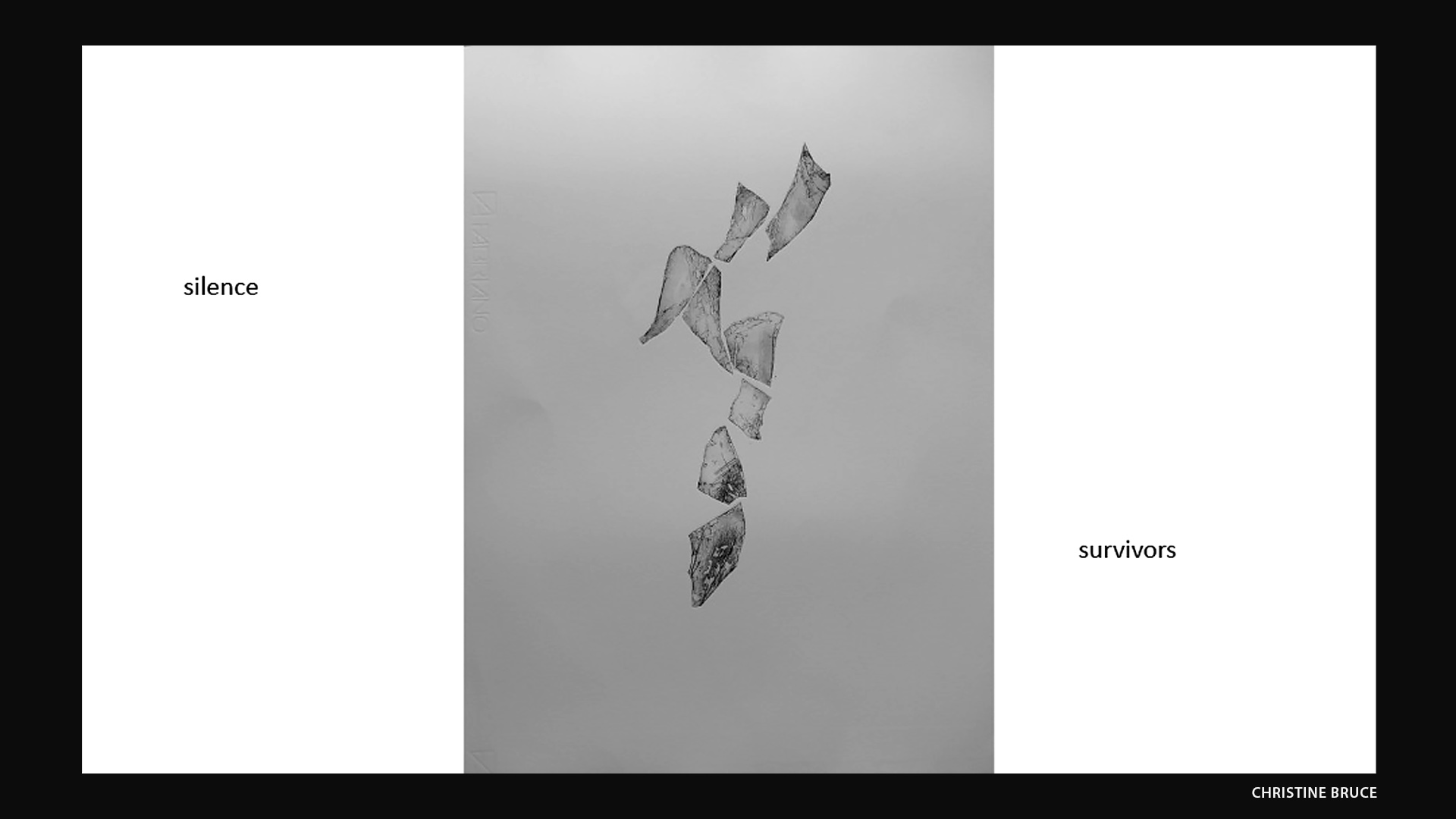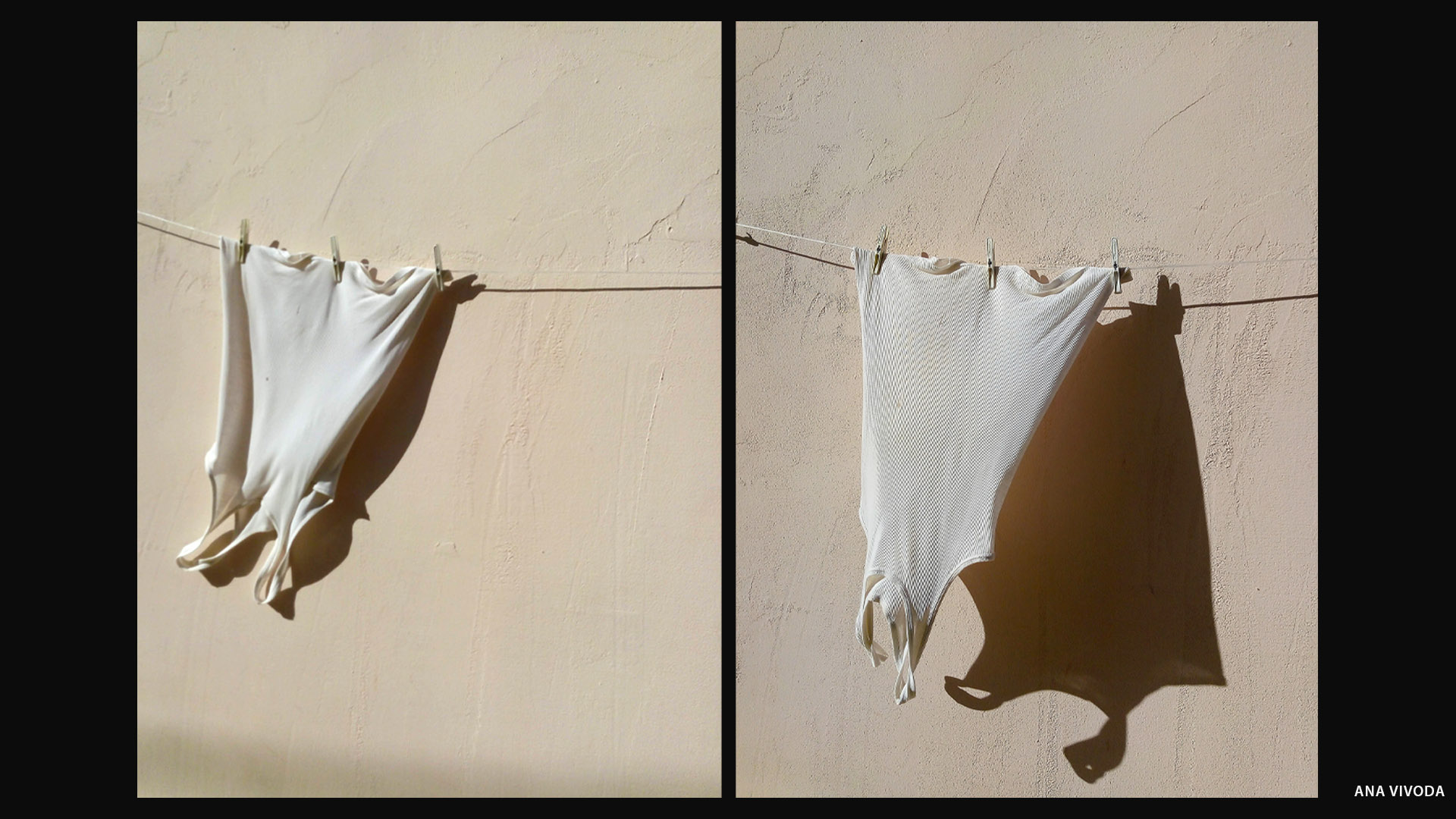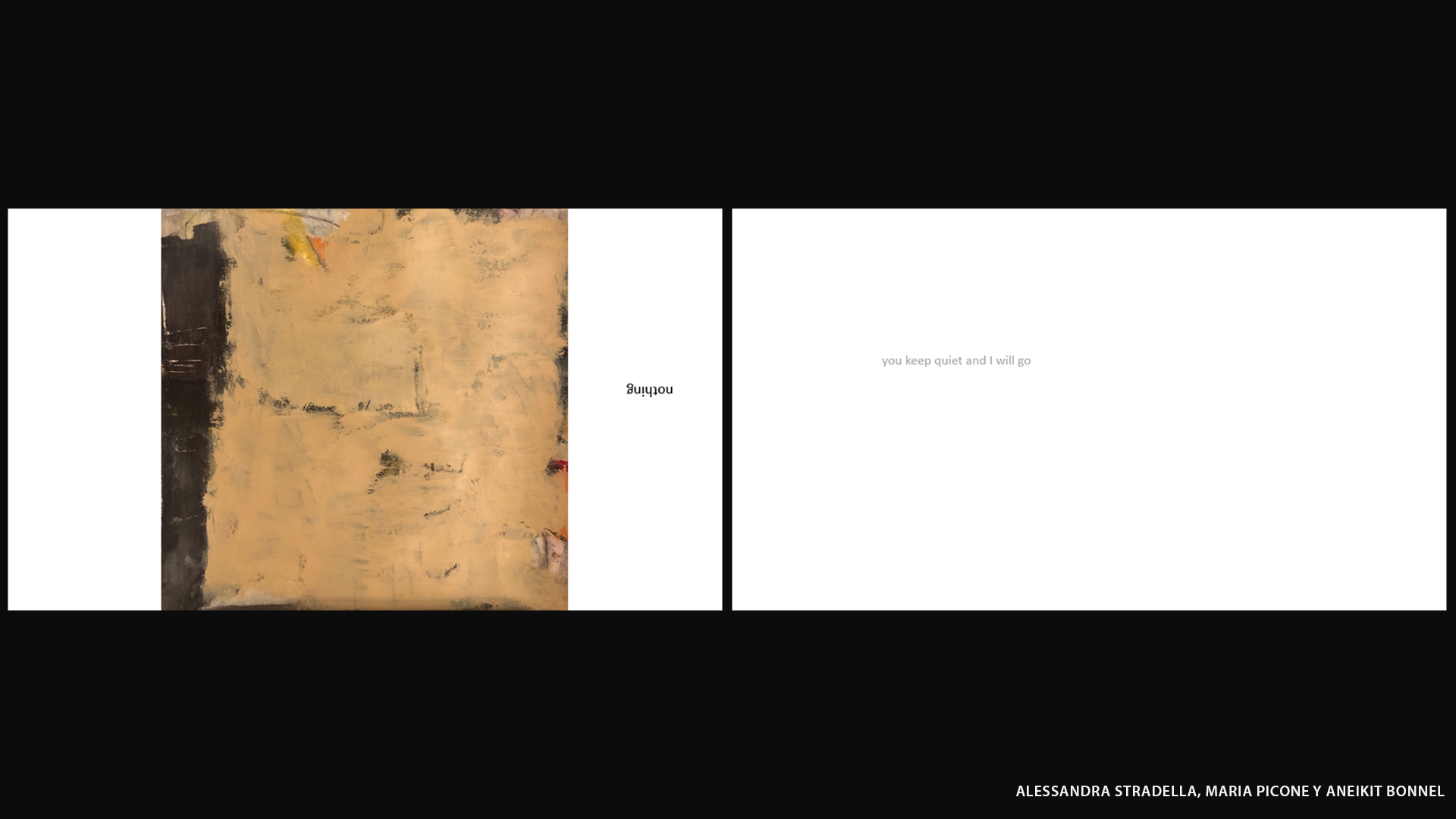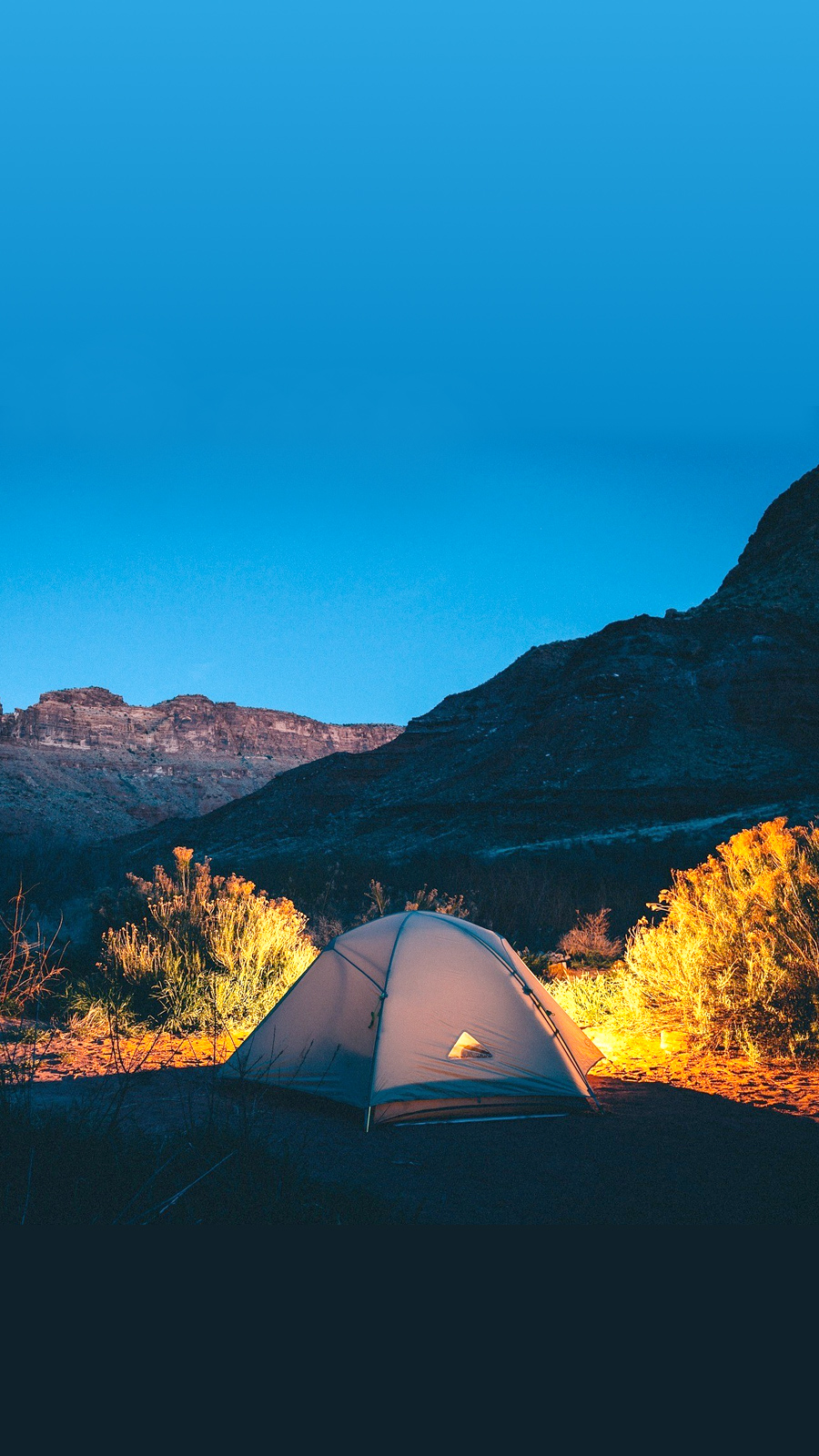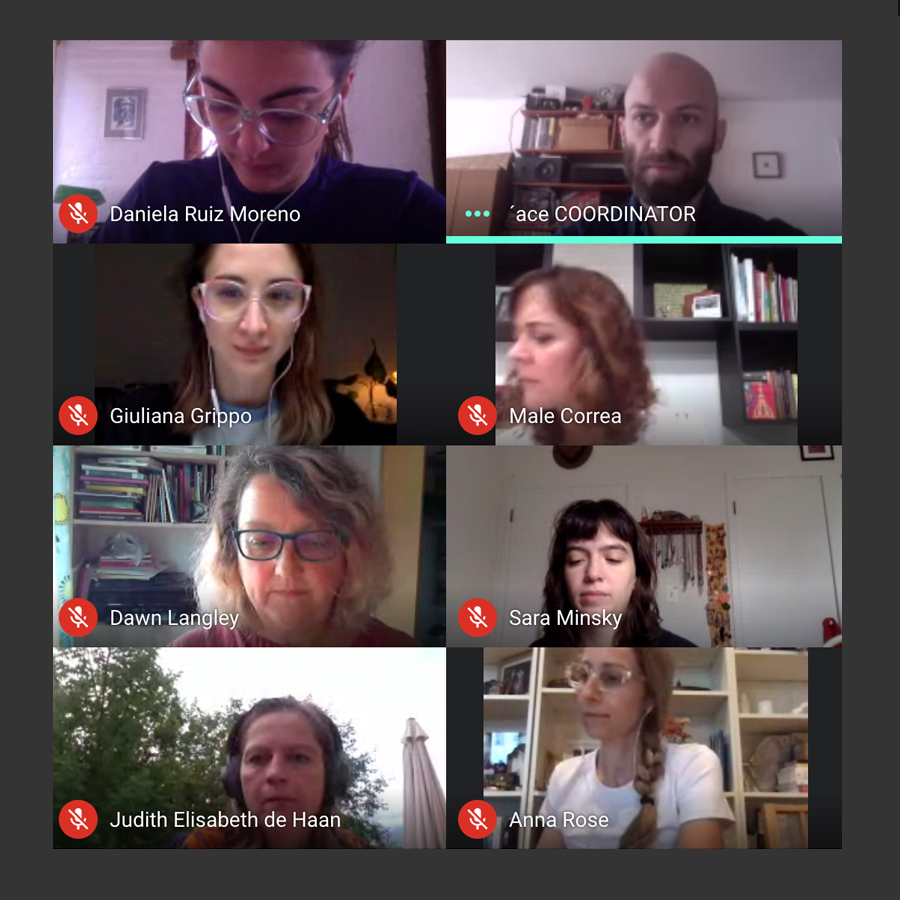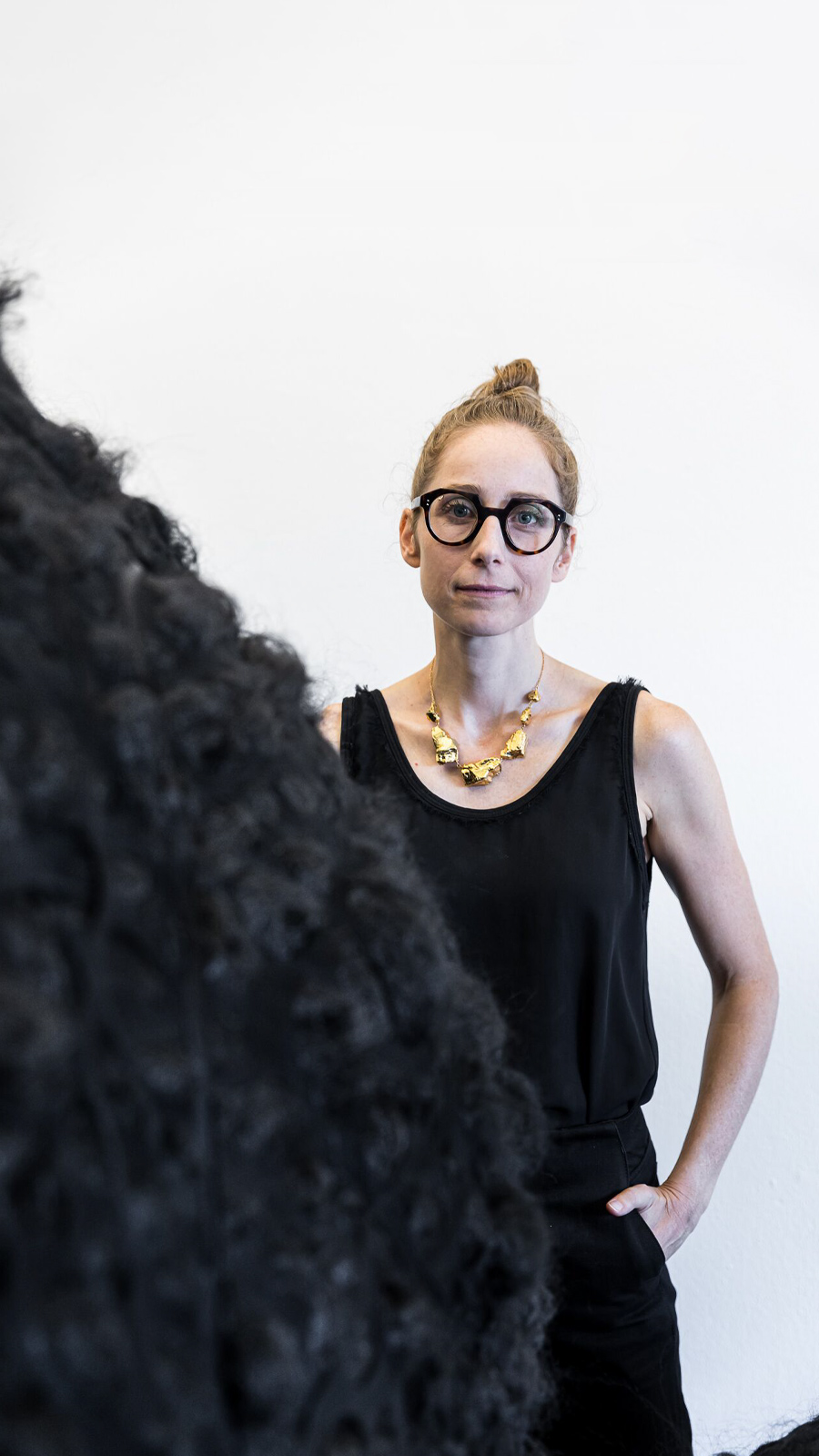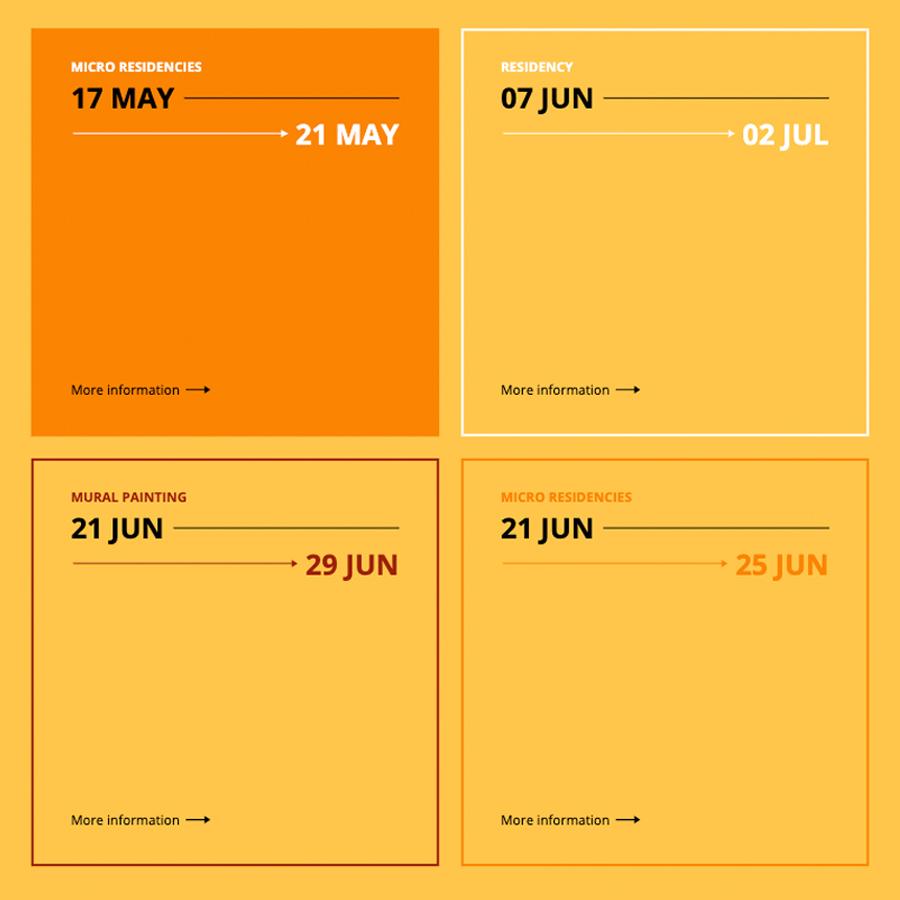Artists
United States of America
Jill AnnieMargaret
Together Apart: #Shelter
19.08.20 09.09.20
Jill AnnieMargaret combines the taxation of the engraving processes with collection, interpretation and installation, exploring the aftermath of personal and social trauma. Her work questions and responds to upheaval, transmuting and transforming challenging experiences into spaces or objects of healing, wonder or spectacle.
The imprint of human skin, relics and hair aligns with the somatic and non-verbal odyssey of trauma. Bridge of environmental degradation and human suffering in Trauma Studies. Lichens absorb and retain air pollutants for decades. The long-term presence of compounds such as radioactive isotopes has been documented by scientists in high concentrations of lichen foliage, serving as evidence of human-caused trauma in the environment. If it is buried, unclaimed, or unexamined, the trauma embeds itself into the tissue until it is forced out, triggered by a sound, smell, location, or other stimulus. Trauma demands recognition, if not through healthy means, through depression, anxiety, and substance abuse.
JILL ABOUT TOGETHER APART: #SHELTER
The creative and energetic team at ´ace organized an incredible residency. As an ´ace alumnus, she knew the program would be well organized, but was not sure how it would take shape as a remote event. Each week, the ´ace staff presented relevant, critically sound and thought-provoking materials that have ignited, inspired and nurtured my practice. My work and practice expanded in new directions conceptually and introduced me to thinkers and artists whose work will influence mine in the future.
Our cohort was comprised of artists living in seven different time zones and around the world. In the span of four encounters, ´ace created the space and context for a wonderful community to develop, emerge and continue into the future. My thoughts on the shelter took two different paths. During the summer of 2020 I was sorting, organizing and cleaning my belongings. The house I live in was built in 1940 and had an unfinished closet in the basement. During residency I gutted and demolished it, removing the old moldy wood and debris, preparing to rebuild it. While the wall was open, I installed a time capsule. It included a handwritten note on the pandemic, a poem by Seamus Heaney, “Gifts of Rain,” two linocuts and 75 cents on the dollar. Adding poetry to my literal refuge was a hopeful gesture, but one that acknowledges a life and time beyond my own.
As I broadened my thoughts on the refuge, water emerged as important and all-encompassing. Swimming has been a haven of physical, mental and emotional refuge for me throughout my adult life. The pandemic has amplified this fact, but normal pool swimming routines are not possible at this time, so I dedicated myself to swimming in open water. In the water, I enjoy being weightless and moving like a dolphin. While I experience some anxiety, the time spent in it restores my mood and generates a greater appreciation for life. To capture the refuge from the water experience, I purchased a waterproof camera and took it to the pond and reservoir. The resulting images reveal some of a swimmer’s visual experiences, but they also amplify the physical isolation and smallness of a human during a pandemic.
BIO
Jill Annie Margaret
1965, Idaho, USA
Lives in Boise, Idaho, USA.
STUDIES
2005 | M.F.A. Engraving, California State University Long Beach, Long Beach, California
2001 | B.F.A. (with distinction) Engraving, Sonoma State University, Rohnert Park, California
2001 | Academia di Belle Arti, Florence, Italy
1990 | B.S. Communication, Clarion University, Clarion, Pennsylvania
EXHIBITIONS
2019 | Gather, Truckee Meadows Community College, Reno, Nevada, USA.
2018 | Recorded in Stock, CTA Gallery, Boise, Idaho, USA
Video created by Gallery CTA of Etching Into Existence
Prototypes for Resilience, Reflections Gallery, University of Idaho, Moscow, Idaho
2014 | Hairstory-Herstory, ‘ace Foundation for Contemporary Art, Buenos Aires, Argentina.
2015 | Gallery 234, University of Wyoming, Laramie, Wyoming, USA,
2015 | La Tertulia Spanish Language Learning Center, Boise, Idaho, USA,
2016 | Transitions Gallery, Idaho State University, Pocatello, Idaho, USA,
2012 | Presence – Absence:
Nagoya Zokei University, Gallery D2, Nagoya, Japan
RESIDENCIES
2020 | Art as Activism, Beach, Summer Lake, Oregon, USA
2014 | ´ace Foundation for Contemporary Art, Buenos Aires, Argentina
2013 | Isle Royale National Park, Michigan, USA
2012 | Saltgrass Printmakers, Salt Lake City, Utah, USA
2004 | Wrangell-St. Eiias National Park, Alaska, USA
AWARDS
2019 | Alexa Rose Foundation Scholar (funds granted to visit childhood trauma sites in Pittsburgh, Pennsylvania)
2018 | College of Arts and Sciences Travel Scholarship, Boise State University
Mid-America Print Council Conference:
Go West, The Collaborative Turn, University of Wyoming.
2017 | Teaching and Learning Center (travel grant for teacher-led program for Scuola Grafica Internazionale, Venice, Italy)
2015 | Idaho Arts Commission Quick Funds Grant to help with Hairstory-Herstory.
Boise State University Institute of Arts and Humanities Project Completion Grant.
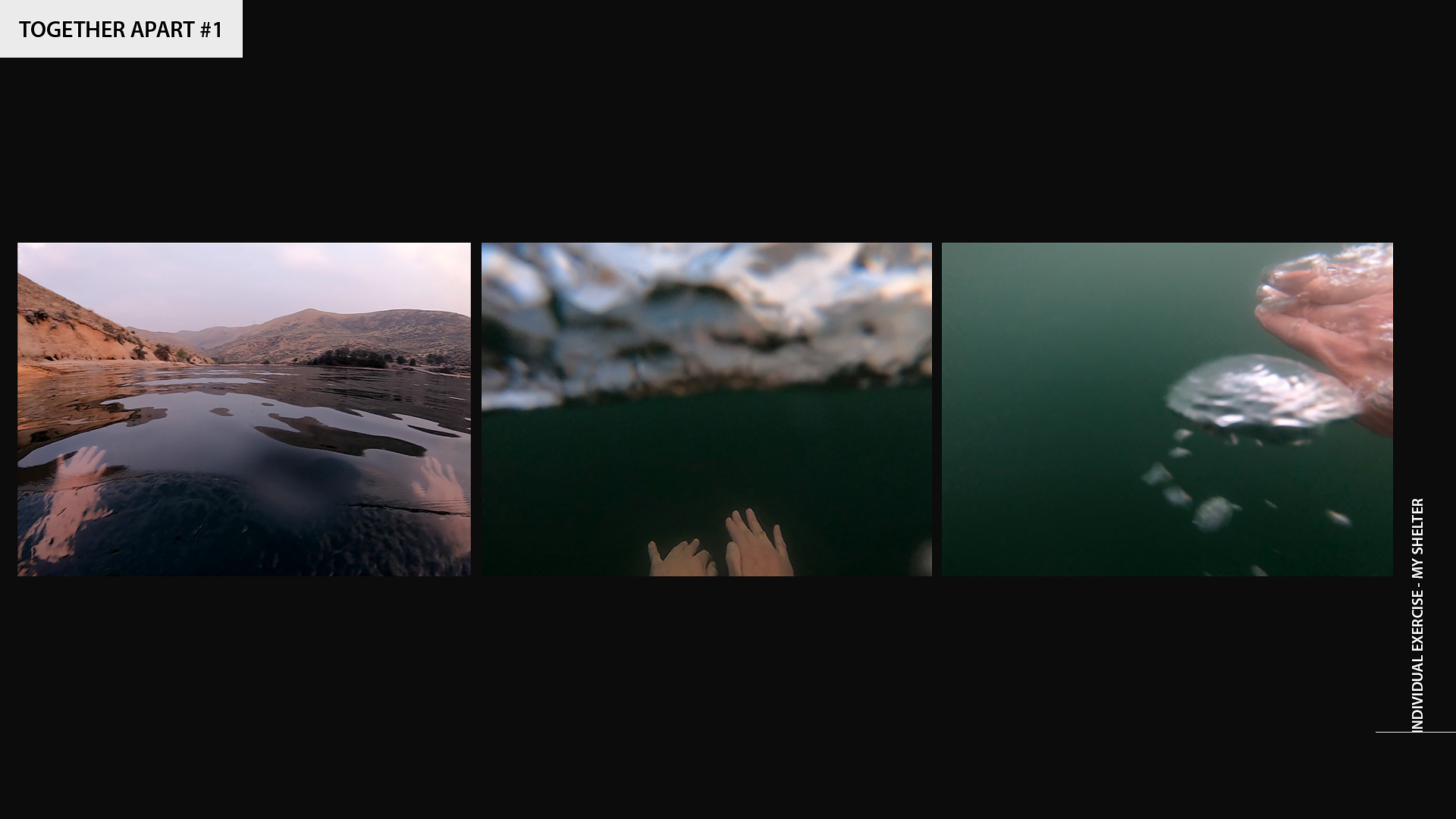
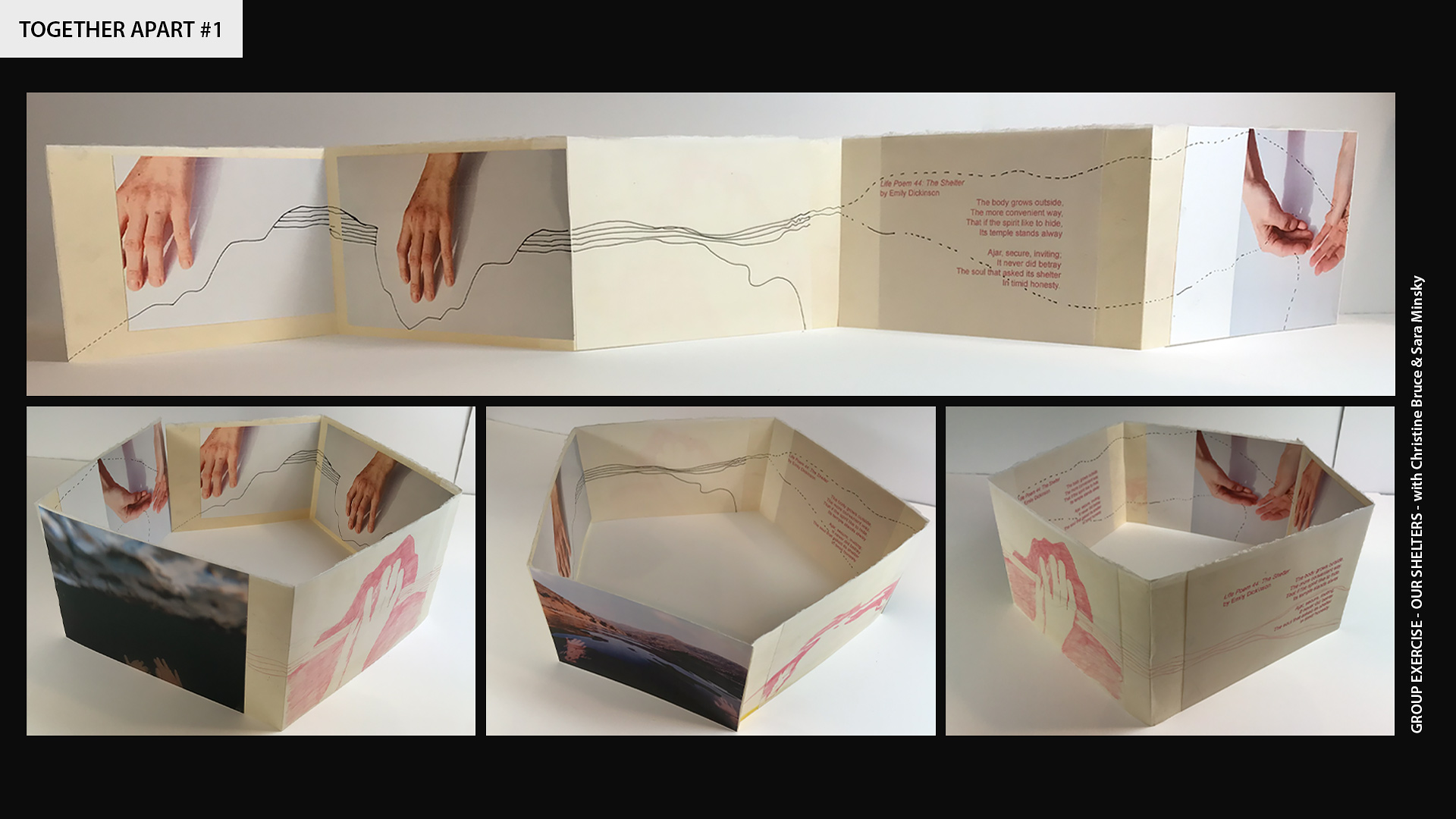
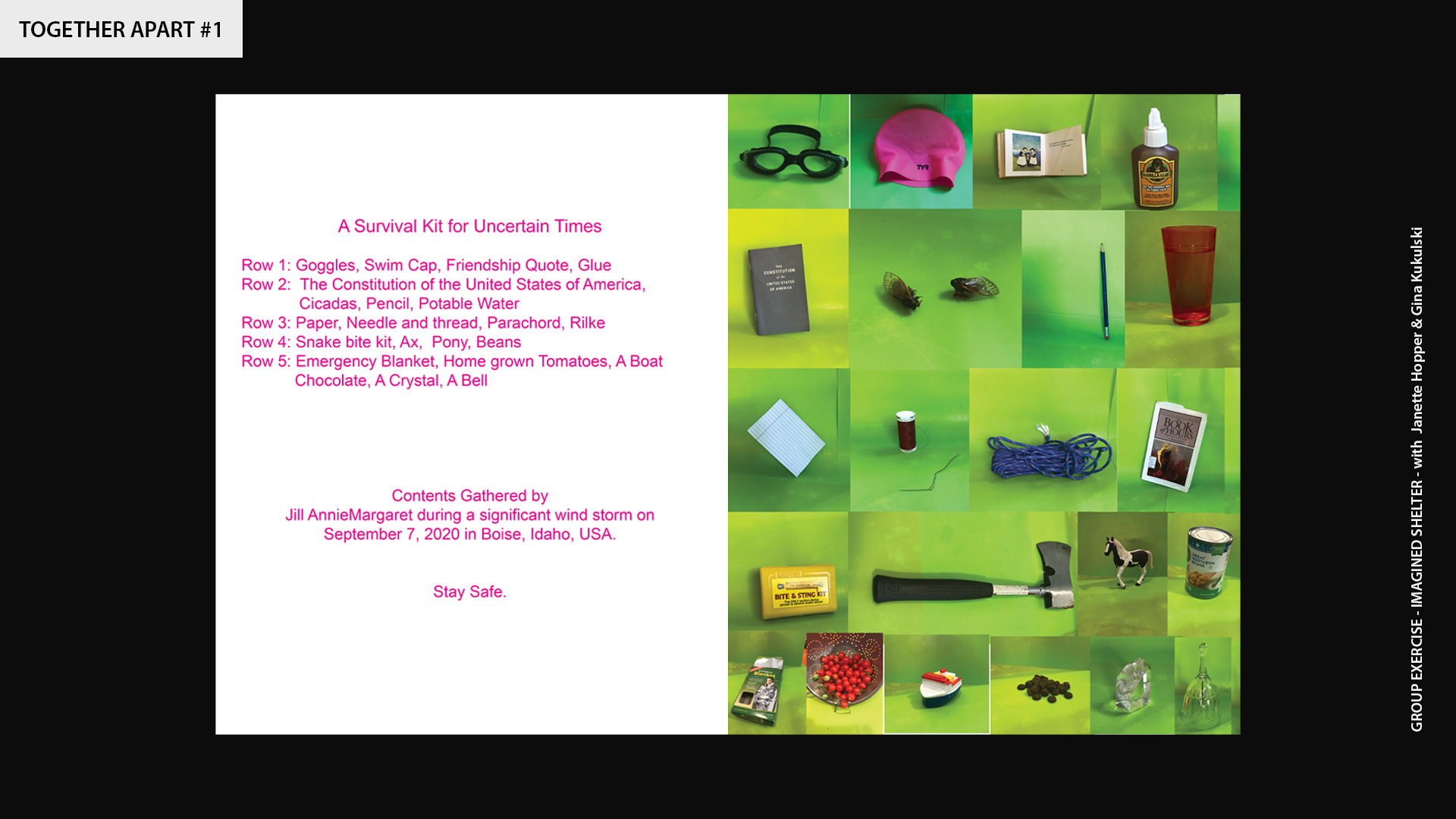
Related Activities
Exhibitions, Together Apart
#1 | SHELTER: results
Artists in dialogue
16.12.20
During 2020, we carried out the first two sessions of Together Apart. The first session took as a conceptual and practical framework the REFUGE and the second, the NEST.
Through those starting points, both of which refer to caring atmospheres and structures for coexistence, we were able to think and create in a wide variety of directions and layers. We reflected on our pandemic context, a situation for which we had to find ourselves in the virtual non-space, but also a situation thanks to which people from many different countries were able to work simultaneously.
Assuming this complex situation, more than 20 participants per session created new pieces –some in exercise format–, took up projects that they had already worked on in the past or collectively set out to create new projects that will continue to develop beyond the scope of our meetings.
Taking these refuge and nest issues also in their complexity, we asked ourselves questions that made each of the participants involve their personal experiences, memory, memories and experiences from each of their territories. We addressed questions that sought to keep us in constant movement; at times we went through very optimistic or pessimistic visions about the possibility or necessity of having a shelter or a nest, and at other times, we were able to articulate more complex visions, enduring in intermediate and liminal states. For both, we took as a theoretical structure of support and dialogue the thought of Félix Guattari presented in The Three Ecologies (1989). His ethical-political approach that highlights the molecular domains of sensitivity, intelligence and desire, as well as his articulation of the three ecological registers (environment, social relations and human subjectivity), helped us to expand our creations and thoughts in relation to shelter and nest.
During the first session, when asked about the conditions that a refuge can have and the conditions that we would like a refuge to have, the artists (coincidentally and by chance, we had a cohort one hundred percent comprised of women) generated sculptural pieces, artists’ books, photographs, videos, dance pieces and more, reflecting on the permeability or isolation structures that a shelter can have. Also, many artists started from their bodily memories to refer to the refuge and made improvisation and performance pieces. We created in relation to the refuge conditions presented by nature and the refuges that we create to protect ourselves from certain natural conditions. Memory as a refuge and shelters for memory also arose through textile practices or from the use of jewelry or objects with which we build links. Finally, the bonds and the community as spaces that shelter and spaces that imply care was another of the axes that we explored through pieces that included readings of texts and sound activations.
Together Apart has functioned as a program that opened up possibilities for meeting and collaborative creation. It has made possible the creation of new rhythms and synchronies for a limited time but whose reverberations and echoes continue to affect in unexpected directions.
Daniela Ruiz Moreno (curator-in-residency)
Related artists
- Alessandra Stradella
- Ana Vivoda
- Aneikit Bonnel
- Anna Rose
- Ariana Pirela Sánchez
- Caia Diepenbrock
- Carla Freschi
- Christine Bruce
- Dawn Langley
- Dolores Delia
- Gina Kukulski
- Giuliana Grippo
- Janette Hopper
- Jannelle Roberts
- Jill AnnieMargaret
- Judith Elisabeth de Haan
- Male Correa
- Roseanne Lynch
- Sara Minsky
- Shereen Shalhoub
